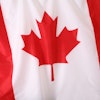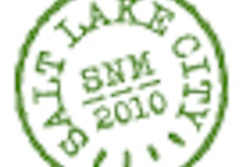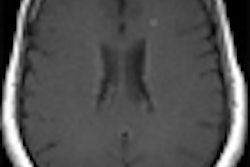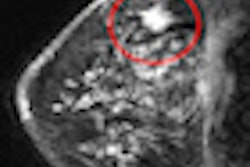Mammography advocates have been concerned about the impact of last November's screening recommendations by the U.S. Preventive Services Task Force (USPSTF). But it turns out that the economy is having a much bigger effect on screening.
Faced with budget shortfalls, states are slashing funding for mammography screening, and mammographers are beginning to worry that declines in screening could undo decades of progress made against breast cancer. In the past year, numerous states have cut budgets for free cancer screening programs, including California, Colorado, Montana, Illinois, Alabama, Minnesota, Connecticut, South Carolina, Utah, Missouri, Washington, Ohio, Massachusetts, Pennsylvania, and Arkansas, according to the American Cancer Society's Cancer Action Network.
Combine the state actions with the USPSTF rescinding its recommendation that women ages 40 to 49 receive regular mammography screening, and there's a definite tilt toward reduced accessibility -- which could lead to an increase in breast cancer deaths, according to Michael Linver, MD, vice president of the National Consortium of Breast Centers in Warsaw, IN.
"[For example], California is now following the new USPSTF recommendations -- no mammography below 50 or above 74, and screening every other year," Linver said. "It breaks my heart, especially after all the fantastic gains we have made through mammography in the past 20 years. Women's lives will be needlessly lost, and it is a real shame."
Higher insurance rates and uncertainty about how healthcare reform will play out have an effect, too, according to Edward Sickles, MD, chief of breast imaging at the University of California, San Francisco.
"The impact of the poor economy -- and recent increases in insurance premiums for insured women -- also have had effects on mammography screening, apart from what state governments have done, probably affecting more women than are affected by state government cuts," Sickles told AuntMinnie.com via e-mail.
California: A case study
On January 1 of this year, the California Department of Public Health (CDPH) suspended new enrollments in the Every Woman Counts (EWC) program, which provides free screening and diagnostic mammography services to low-income, uninsured, or underinsured California women. The freeze is in effect through July 1. In addition, the CDPH increased the eligibility age for the program to 50.
"These changes mean that nearly 100,000 women will not be able to access this essential service," wrote Sen. Jenny Oropeza (D-Long Beach) to California Health and Human Services Secretary Kim Belshé in May. In her letter, Oropeza requested data on the number and cost of mammograms funded by the EWC program from January through March 2009 and 2010.
California alone has acted on the USPSTF age recommendation, according to Sean Tuffnell, spokesperson for the Susan G. Komen Foundation for the Cure in Dallas.
"To our knowledge, California is the only state that has changed its eligibility age since the USPSTF recommendation was released," he said.
For the period in 2009, the number of claims for services in the EWC program was 65,271; for the same period in 2010, the number of claims for services was 32,915.
"Unfortunately, the dire fiscal situation left few alternatives, as the EWC program is not an entitlement program and available resources declined significantly," wrote Mark Horton, MD, director of the CDPH, in response to Oropeza's request. "[However], the EWC program expects the number of claims for services [for the period in 2010] to increase over time as the department receives and adjudicates more claims."
In May, the CDPH met to determine how to redirect funds and provide screening services for more women. Two proposals came out of that meeting, according to Horton:
- Change the standard case management fee for providers to a tiered structure.
- Provide biennial screenings instead of annual ones for women with no abnormal results.
"These proposals are estimated to reduce costs by $12.2 million, and will allow the EWC program to reopen enrollment to women over 50 in the budget year," Horton wrote.
Oropeza has authored and presented a bill to the California Senate that would reverse some of the changes the CDPH made in December. SB 836, Restoring Early Cancer Detection, would restore access to free screening and diagnostic services to low-income women, and it would require that breast cancer screening services be provided to every woman exhibiting symptoms, regardless of age, and to those 40 and older. It is currently under review by the California Senate Appropriations Committee.
More than 1.2 million women are eligible for the California program, but because of federal and state budget constraints, the program is serving only 300,000 California women each year, according to California affiliates of the Susan G. Komen Foundation.
"Women ages 40 to 49, who are no long eligible to participate in Every Woman Counts thanks to the program cuts, make up a third or more of the women screened by the program [in past years]," the Foundation said in a statement earlier this year. "The cuts to Every Woman Counts will have a minor impact on the state's budget deficit, saving the state only about $10 million, or less than 0.5% of the deficit."
Going forward into 2011, Gov. Arnold Schwarzenegger of California has outlined cuts to a number of programs that will be implemented if additional funds aren't found. This includes a further reduction of funding for the EWC program, as well as the possible elimination of the Breast and Cervical Cancer Treatment Program, administered by Medi-Cal, which offers affordable breast cancer treatment to low-income women, the Foundation said.
Will other states follow suit?
One of the most important provisions of the stimulus bill passed by Congress last February was the support to states provided by enhanced federal matching rates (FMAPs) for Medicaid. The stimulus bill increased the FMAP for 27 months, retroactive to October 1, 2008, and set to expire December 31 of this year. Currently, there are proposals before Congress that would extend the enhanced FMAP rates until the end of June, 2011, according to Tuffnell.
At least 30 states have either passed or proposed budgets for the next fiscal year that include the assumption that the federal government will extend the FMAP, he said, making that extension key to the survival of these programs.
"A lot of states use the FMAP to run their breast and cervical cancer protection programs," he said. "South Carolina, for example, has already cut its breast cancer program by $1 million, and says it will cut another million if the match doesn't come through. That would mean 8,000 more women in that state would lose access to screening."
But the budget shortfall for these state programs has been a constant problem, according to Mona Shah, associate director for federal relations at the American Cancer Society Cancer Action Network. The federal government provides grants to the U.S. Centers for Disease Control and Prevention (CDC) for distribution to states to support breast and cervical health and cancer care, but the states are required to match the grant on a scale of $1 to the government's $3.
"Breast and cervical cancer screening and treatment programs have been inadequately funded for years," Shah said. "Currently, only one in five U.S. women who are eligible can get access to the program because of funding shortfalls. The proposed federal fiscal budget for 2011 cuts funding to the CDC by $4 million, which, if implemented, will of course further affect these programs."
Project Renewal's ScanVan program provides mammograms to women around New York City. At full capacity it serves 6,000 women per year; last year it was only able to serve 3,700 because of budget constraints, according to director Mary Solomon.
"Last year we were put on a quota; we were rationing care," she said. "For now, these quotas have been rescinded, but New York state is facing a $9 billion budget gap, and what happens tomorrow [for cancer services] is anyone's guess."
By Kate Madden Yee
AuntMinnie.com staff writer
June 22, 2010
Related Reading
Senator asks HHS to strike USPSTF guidelines, May 12, 2010
Does mammogram row signal time for policy shift? April 7, 2010
Authors of Nordic mammo study no strangers to controversy, April 6, 2010
Mammography advocates weigh in on Nordic study, March 26, 2010
Breast cancer screens don't save lives: Nordic study, March 25, 2010
Copyright © 2010 AuntMinnie.com




















